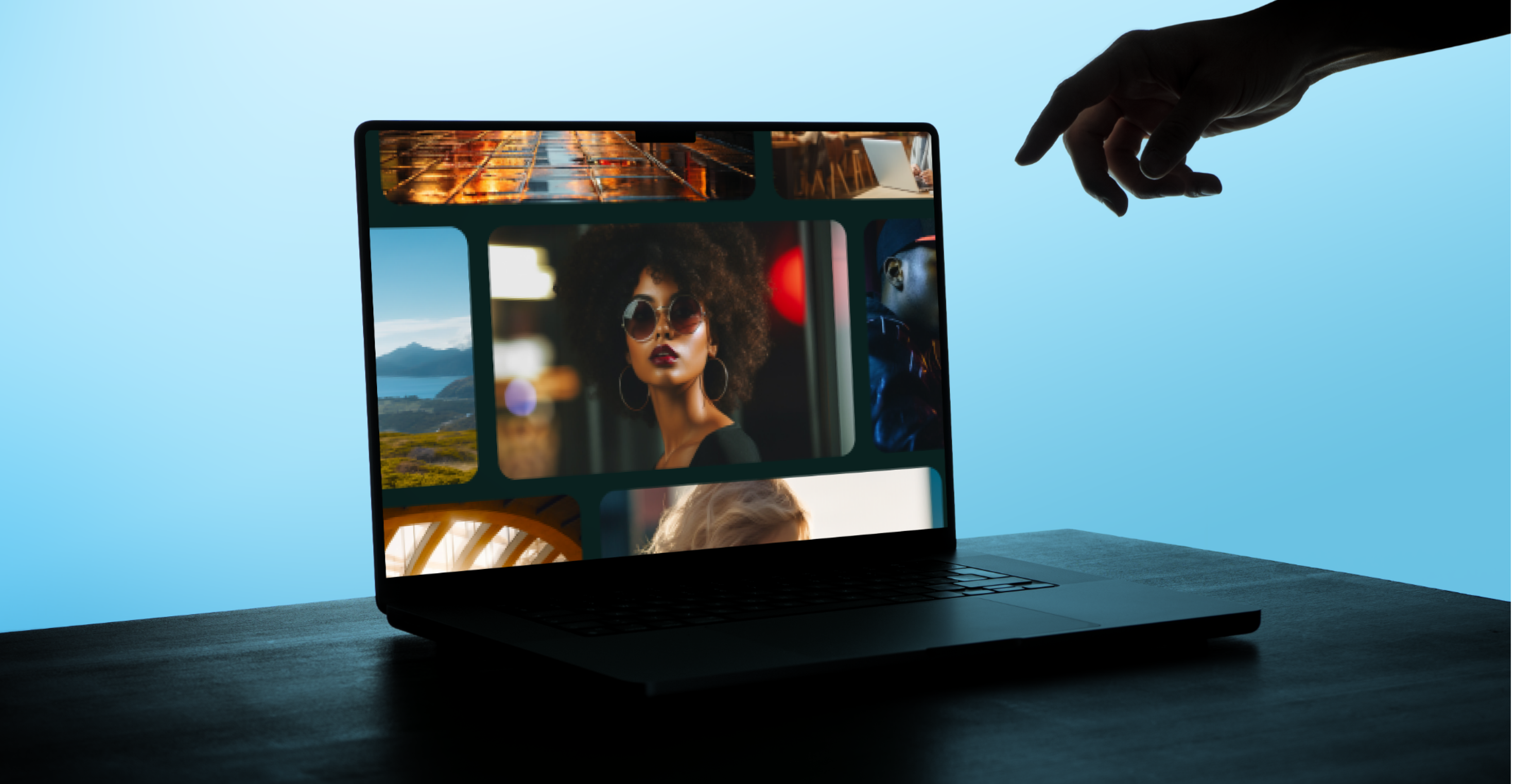
When’s the last time you felt someone really got you? When someone got your references, felt your pains and shared your joys? Surely you remember the feeling, if not the precise timestamp: You felt understood. Like you were on the same page, and you belonged right where you were.
On an individual level, this is the basis of friendships and relationships. When many gather around the fire, it becomes a community. Where there’s a community, there’s common interest. And where there’s common interest, there’s opportunity—that's the beauty of a brand community.
That's something we understand at Superside. It's why we host monthly events to help our community connect with and learn from the best and brightest marketers and creatives—without a selfish product push. We get enough of those day to day. The idea of community is fostering a genuine sense of belonging, and generating valuable discussion and connections.
We take community seriously. Are you ready to build yours?
Let's go!
Why is having a brand community important?
How do I build a brand community?
4 examples of great brand communities
Get excited for Superside's community
What is a brand community?
A brand community is a group of consumers who gather around their interest in a brand, or the values the brand promotes. Their relationship with the business goes beyond interest in the product or service, though. Instead, the community forges strong bonds with the business and other users. When done well, this results in brand loyalty, advocacy and increased engagement.
How a brand community congregates and engages often depends on the brand’s level of facilitation. While some brand communities live and thrive of their own accord (e.g. subreddits), the smartest businesses provide the space. These days, that means having an online forum where like-minded users can congregate and discuss topics related or adjacent to the brand.
These communities let people connect with and learn from those with similar experiences—richer interactions than they’re used to in common conversation. This deeper brand connection with an audience allows users and consumers to express themselves, meet and build relationships with other loyal users.
Why is having a brand community important?
A brand community serves more than self interest. Having a nice, big prospect pool is often the chief motivator, but the community itself works best when it’s scant on obvious marketing tactics. A brand community shows your brand cares about its field/industry, and those involved with it.
Ironically (and to the marketer’s satisfaction), getting this process right can drive brand loyalty beyond selling simple goods and services.
Some form of brand community will exist without your consent. Social media users assemble around hashtags and groups to discuss products and services every day, so be proactive in contributing to or even managing these interactions to unlock their benefits.
Benefits of brand communities
The best thing about brand communities is the benefits both facilitators and users enjoy.
Here are just a few of the significant advantages businesses reap.
- Connecting with loyal customers
- Converting customers into brand advocates
- Helping customers extract maximum value from your products or services
- Increasing brand awareness
- Generating user-generated and collaborative content that directly/indirectly promotes your brand
- Collecting valuable first-party data
- Collecting user feedback and reviews to drive improvement
- Adding an extra dimension to the customer journey
- Achieving a deeper understanding of your customers
- Helping consumers find and connect with like-minded people, ingraining further trust and necessity
How to build a brand community?
One of the first places to start is by learning from the best. Watch this in-depth video about building a thriving brand community with Annette Cardwell, Senior Director of Content at Lattice. Go on, we’ll wait.
Know that some of your consumers may already be talking about your products or services. It could be via Twitter, Instagram, Facebook, or in a group or forum dedicated to discussing your niche or the void you’ve filled.
Depending on the size of your brand, your options for building a forum could be:
- design a dedicated space for these relationships, or
- go to where your audience already hangs out, and participate/facilitate without throwing off its existing balance
Here’s a step-by-step guide to creating your brand community.
Step 1: What is your brand?
Figuring out a brand identity should be the first item on your list. Who are you, and what do you bring to the table in your industry? In a rush to get to market, many companies leave this stage fuzzy or undefined. A clear identity is easier to rally around, so nail that before opening the gates
Think out what you’re “about”. These days, consumers want to buy from brands that speak to them. They expect brands to reflect their values on social issues with no clear financial benefit to you.
It's quite common for business founders to have experienced frustration with existing products or services because they were too expensive, too limited, or too demanding of their time. Whatever the story, you can bet there’s a social component to it; one that’ll resonate with your users if workshopped.
Identify the pain points your business alleviates. At Superside, we understood that design was often frustrating and time-consuming for businesses. Making high-caliber design easy is our angle, and it’s a message we make ubiquitous anywhere you find us.
So, before you build your brand community, you should define your:
- Company mission
- Vision
- Personality
- Brand voice
- Aesthetic
A good brand has a coherent voice across all its marketing materials, copy, and customer communications. Additionally, it has a consistent look and feel. This is where design is essential.
Brands work because when they’re recognizable at a glance. Good communicates the ethos of your brand through images, fonts, and the overall feel of your marketing materials, website, and communications.
Define your audience persona
Make a “sketch” of your customer. Who are they, and how does your service help them? Make this a thread that runs through everything you put out into the public sphere. The more you show your audience what you are about, the more your audience can relate to your goals, visions and personality; not just your product.
What is your brand personality?
Are you formal, or fun? Exciting, or by-the-books? This choice will dictate your messaging style, from advertising to how you speak to potential clients.
The tone you strike will often be determined by your product or service. If you work in healthcare, be stern but helpful. If you’re in a creative field, an air of whimsy may serve you better. Think about how you’d talk to your user one-on-one.
Step 2: Define what you want your brand community to be
Most brand communities have a function. For example, Ninja Foodi has a vibrant Facebook group centered around sharing recipes for the product, and for its various features.
Alternatively, the Go Pro community centers around sharing videos that capture all the extreme ways that the GoPro can be used. Between this, conversations about software, modifications, editing and other valuable tips and tricks emerge.
Ask yourself these questions to determine what kind of community platform will serve you and your users best:
- What are the reasons for setting up your community?
- Do you need your audience to have a place to get answers on your product, or your niche?
- How do you expect community members to find value and stay engaged?
What metrics will you use to determine the success of your community? - How will your community assist your brand in achieving its company goals (sales, support, awareness, developing loyalty, etc.)?
Step 3: Where will your brand community live?
The space you choose for your users should be based on the size of your current audience, and how general or specialized your niche is.
Some of your main options are:
Forums:
Forum and chat rooms were some of the first places communities sprang up around the internet. Chat rooms are far less common nowadays, but forums are still alive and well.
Social media:
Many brands have social media accounts on Facebook, Twitter, TikTok, Instagram, LinkedIn, etc. They regularly post stories, photos, blog posts, competitions and more to engage their fans.
You can also build a community around hashtags. It’s especially effective if you make user-generated content part of your groups.
You can also create Facebook or LinkedIn groups for your brand. These spaces are different from company accounts, in that they’re solely for sharing content relevant to the brand or industry.
Loyalty and Affiliate programs:
Loyalty and affiliate programs work by rewarding your most loyal customers with discounts, free items, or even ways to make money by promoting your brand.
Third-party platforms:
Some choose to use third-party platforms for their brand communities. Messaging services like Slack or Discord can host user discussions and content.
Step 4: Engage your audience
Knowing who you are and who your audience is, it's time to start fostering and growing your community.
If you want to retain and acquire an audience for your community, you need to give them a reason to come to you and stick around. Doing so insists on creating user value.
Blog posts, explainer articles, competitions, AMA's, and behind-the-scenes content are all ways to give your community deeper insight into topics important to them. You can also use polls, promotions and awards to enhance your audience experience.
Co-created or user-generated content can be a big piece of this puzzle. Similarly, you can use annual in-person meetings or conferences to drive engagement. These tactics create value for the audience, and drive excitement for your brand.
Step 5: Build content that will attract users
Building your community is just the start, and you’ll need to actively seek new users.
Tactics for getting people in the door are many, and none are mutually exclusive. An SEO-optimized educational blog, for instance, is one way to help audiences find your community. Answering their questions and giving them access to thought leadership and other materials shows them you know what you’re talking about, and can be trusted to facilitate relevant content and discussions.
4 examples of great brand communities
Knowing everything it takes to build a successful community, here are some examples to inspire you.
#1. Lego
Lego Ideas creates user engagement via user-generated content. The toy company invites consumers of all ages to submit their own creations, enter competitions and give feedback and advice on how to make various Lego items.
Given the emotional attachment many users have to Lego’s products and brand values, there’s no better way to build a community than to publicize certain user creations.
#2. Ben & Jerry’s
Further proving the importance of shared values between brand and consumer, Ben & Jerry’s taps into its origin story of the two hippy friends who founded the company. They’ve built a community around supporting the various social issues that concern them, beyond the release of various frozen treats from grocery freezers around the world.
Their insistence on social responsibility is prominent, and they implore users to get involved in whatever ways they can.
#3. Spotify Community
Spotify’s community is where users share and discuss music, suggest platform ideas, and get and give technical support. User-generated content is awarded through the Rock Star program, which offers helpful users the chance to win show tickets, merchandise and more when they answer questions and provide valuable content.
Spotify understands that easy access to artists and their music is paramount to their users, and leverage it everywhere they can.
#4. Harley Owners Group
The Harley Owners Group is an oft-cited example of the potential of a brand community—one you’re sure to hear tearing down your street on an otherwise quiet afternoon. For Harley Davidson fans, loyalty to the brand is about far more than just owning a bike.
The Harley brand knows its base: Being part of the Harley community is a way of life that encompasses freedom, Americanism, and (perhaps ironically) acceptance into a counter-culture community.
Ready to Commit to Community?
Strong brand communities transcend their products and services. Users align themselves with these groups because they speak to their individuality. They’re more inclined to support brands who support their identity in some way, whether it’s trading stocks or trading grooming tips.
Brand communities offer consumers a way to interact with kindred spirits, and deepen their understanding of things important to them. The smart business is one that puts the first logs in the fire: Giving the audience a place to meet their counterparts, learn new things and extract the most value from your services. Start the fire, and you’ll find yourself with a legion of loyal and vocal advocates that can help your brand grow.












